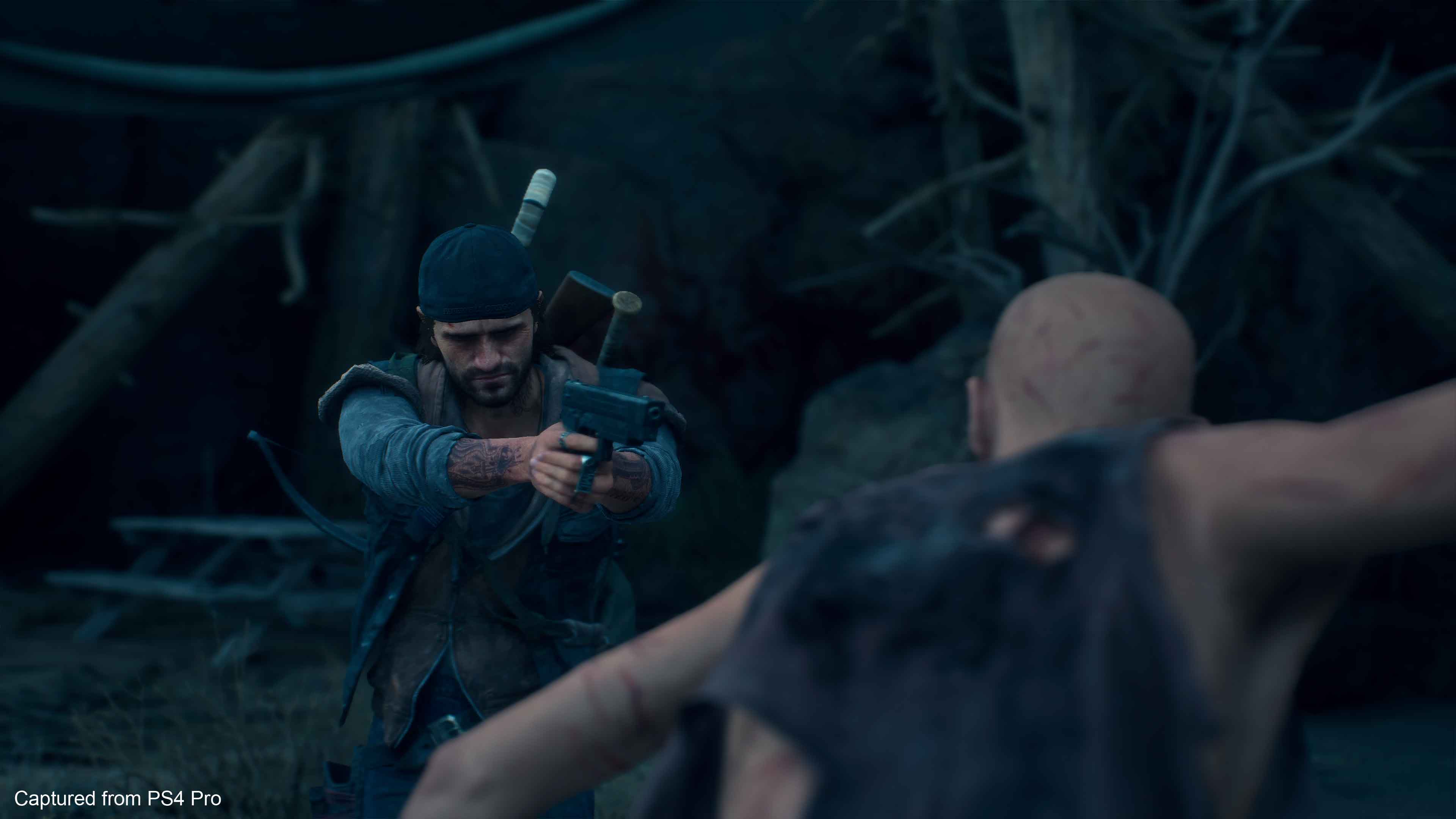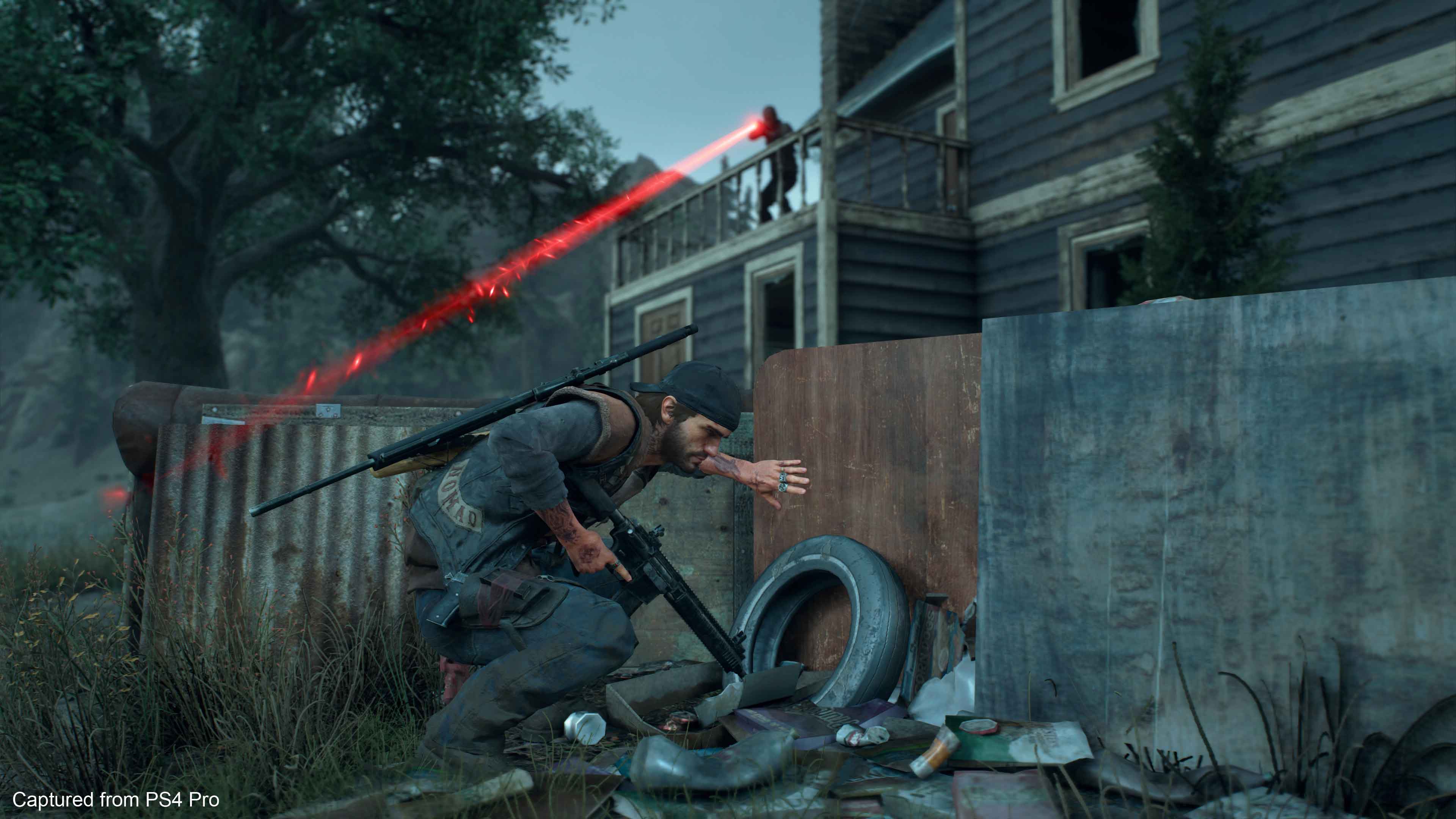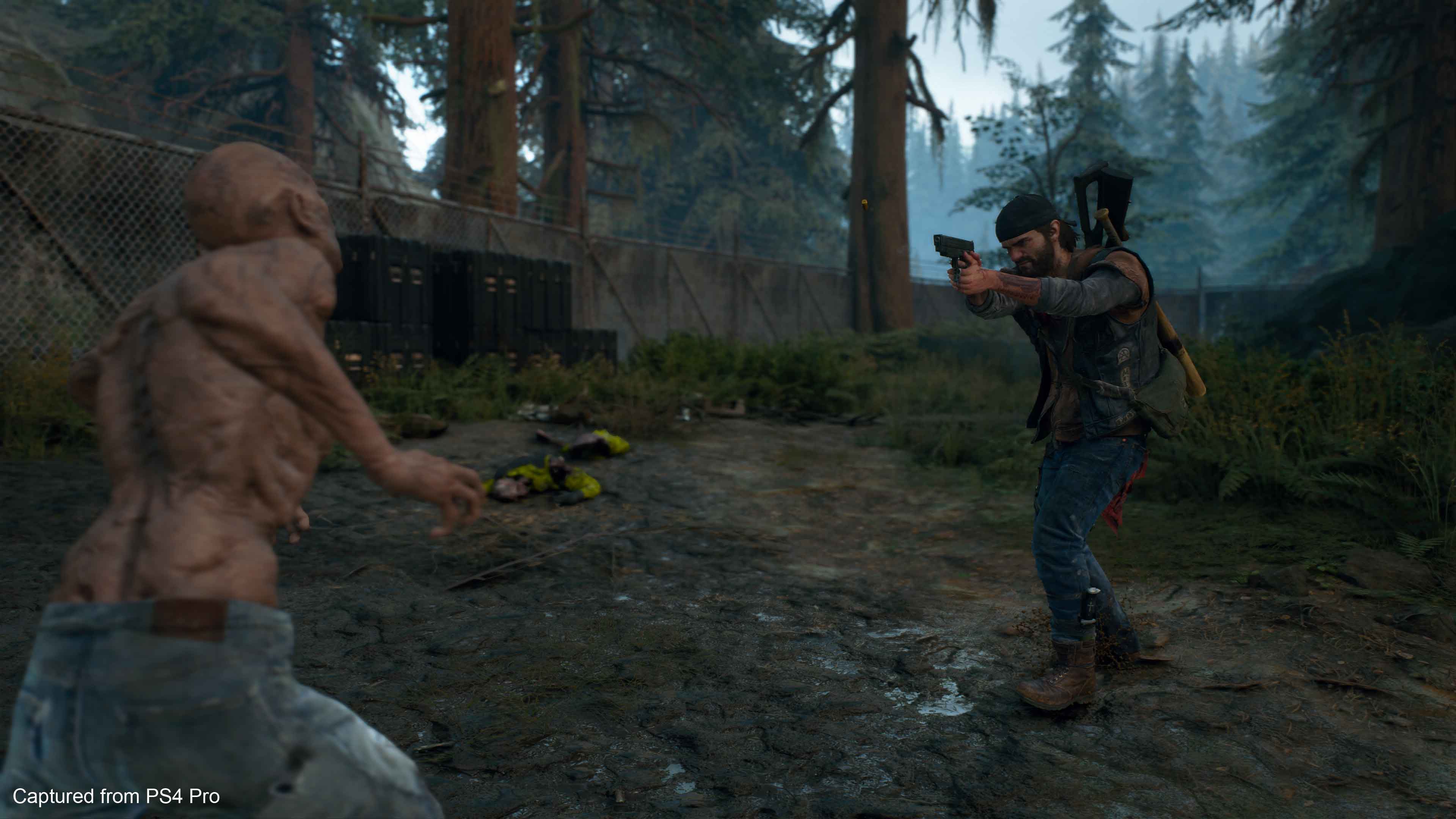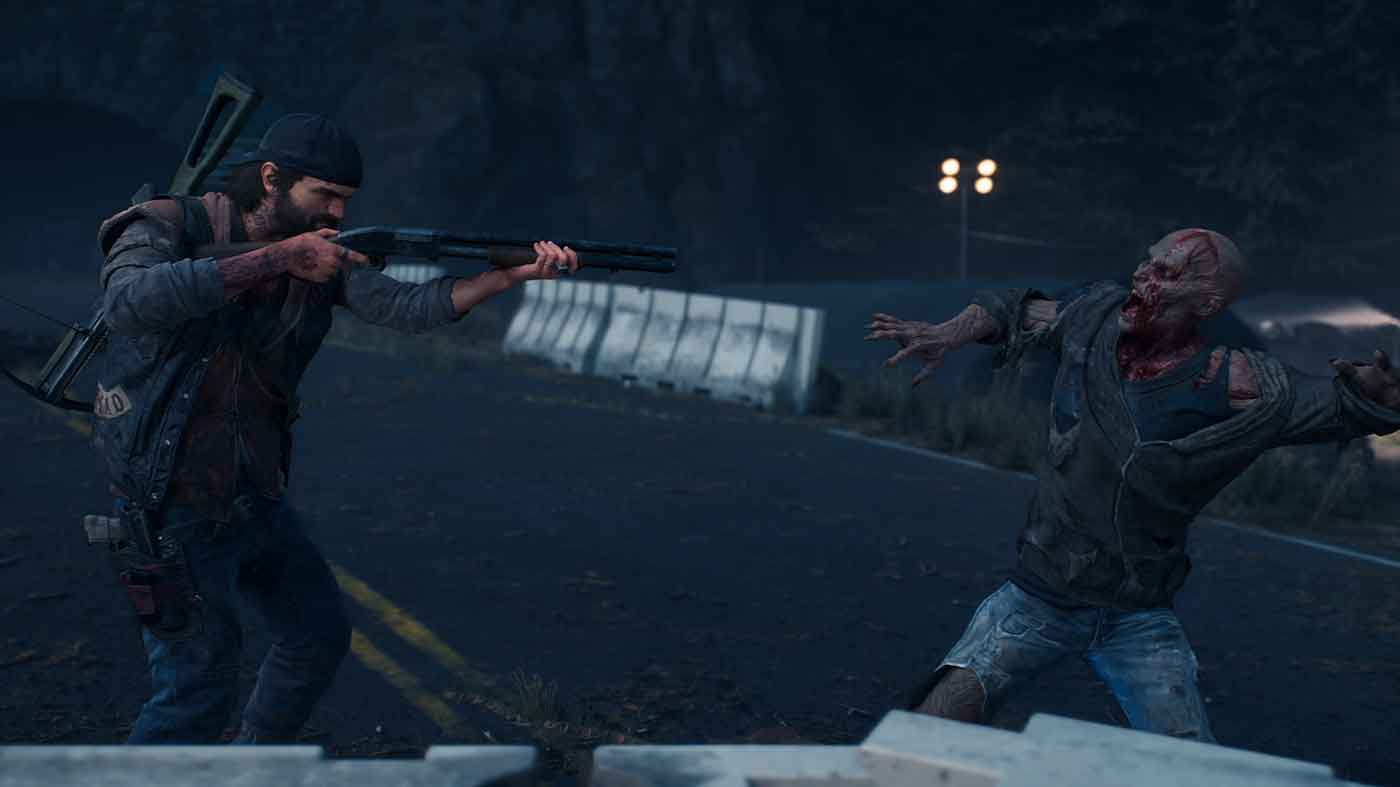Ever since Sony closed their 2016 E3 press conference with Days Gone, my expectations have always been quite reserved. With The Last Of Us being Sony’s most successful new IP of the last 10 years, it’s always felt a little weird to me that Days Gone exists (when they are so similar tonally). After spending about three hours with Days Gone, I’m pretty excited to get into the final version, but still have a few reservations.
One of the first things that the game introduces you to the menu system, which is pretty unique. It uses the DualShock 4 in a way that I can’t recall a game doing. You basically can get to any of the four main screens with a swipe of the DualShock 4.
- Swiping Up will get you to Storylines
- Swiping Left will get you to Inventory and crafting
- Swiping Down will take you to your skill tree
- Swiping Right will take you to your map
Whilst this sounds like a basic detail, it made the menu system immediately easy to understand and left me spending less time fiddling around with menus and being able to get directly to where I needed to go.

A lot of the initial stages of the game are spent teaching you certain mechanics. How to engage in combat (both melee and gunplay) as well as how to track other humans (using survival vision). The tracking portions of these early missions were interesting in the sense that you’d have to piece clues together in order to find a certain person or item. If these are incorporated well later in the game, it could lead to some great puzzling solving aspects that I wasn’t expecting to find here. On the other hand, it could also be repetitive and monotonous if utilised incorrectly.
Days Gone’s enemies are called Freakers. I got to see two variations in this demo. The standard Freaker is what you’d expect to see in any survival horror game, but it was the Newt that had me excited to see other enemies in this game. The Newt are essentially younger Freakers that are shy. They’ll hide on rooftops, and only attack if you get close to them. It was an interesting mechanic that I hadn’t seen used, and I hope that other Freakers have their own unique characteristics.

Both variations of Freakers took a decent amount of bullets to take down, which is why ammo management and crafting plays a massive part in this game. You can only hold one primary, sidearm and a special weapon (cross boy or sniper) at any given time, and the game uses a two-tiered weapon wheel to let you select each weapon or click out using the right analogue stick in order to craft ammo. It works incredibly well, given the amount of throwables, melee weapons and guns that you can have on you at any time, as well as the number of cocktails that you can use to heal or improve stamina/health regeneration.
The rest of your guns are kept in your locker, which you can access back at your camp. Guns that you’ve purchased will be stored here, but those that you pick up from enemies will be gone forever if you lose them or they break.

Once I came across one of Day Gone’s camps, the game started to move into its own. The E3 demo that I played (as well as a lot of the trailers that we’ve seen) seemed to centre around larger hordes of Freakers that seemed more action orientated, but I got to see an open-world game that was more about the survival elements, which will please a lot of people. You’ll definitely find a lot of the tired open-world elements in this game, but there’s also a lot of interesting mechanics that will keep you on your toes.
All of the weapons in Days Gone can and will break. You can bring these back to life with parts, but these are like gold (in terms of them running out quickly). Obviously, this can be make or break depending on your situation, and you want to keep these at a maximum condition as much as possible.

Another huge element in surviving is your bike. When your bike has full fuel and is in mint condition, Freakers are never a threat, but when your bike is damaged or you run out of fuel, not only will you have to make long treks to wherever you’re going, you’ll be at severe risk of Freakers.
Your bike will take damage incredibly quickly if you don’t stay on track and keep the wheels on the ground. It’ll slow down as time goes on, until you’ll only be able to walk it around. This can be repaired using parts, but as I mentioned earlier, you won’t have an abundance of these. Similarly, fuel won’t get you very far and you can only fast travel if you’ve got fuel (and if you’ve cleared Freaker nests between places you’re traveling between.

In terms of upgrading your bike, it seems pretty complex too. You can upgrade your maximum engine speed, your exhaust (which controls the noise output so Freakers can’t hear), your fuel tank, frame health, tyre traction as well as your nitrous.
It was near the end of my demo, that I ended up just giving up as my bike had completely run out of fuel and was running on one or two percent condition and my trek back to the mission was way too far, with Freakers on my tail. Stamina in this game (in the early stages at least) is also incredibly minimal, so managing running away from Freakers versus swinging your melee weapon is a hard thing to balance.

For these reasons, levelling up in Days Gone and unlocking skill points feels absolutely necessary in order to improve your survival skills. There’s three categories: Melee, Ranged and Survival. You can unlock skills such as one that regenerates stamina with every kill, or skills that reveal things on the map or increase accuracy. Most of the skills that I came across seemed like they’d generally aid you in surviving this pretty brutal world.
Another thing you need to balance is the reputation system between camps. You need to choose where to return your Freaker Ears (which you automatically pick up from each enemy that you kill) in order to gain trust with that specific camp and earn credits to purchase things within that camp. You can also purchase weapons, customise your bike or purchase health packs for the road.

The biggest question mark I have over this game is Deacon and the rest of the cast. The game had more cut scenes than I was expecting in the opening few hours, but I can’t say that I felt attached to Deacon or his purpose within this world, which is worrying. This game needs to have an emotional impact, regardless of how good the other elements of the game are.
It gave me great hope that each of the overarching missions were really complex. The Story portion of the menu had 5-6 larger story narratives going on at any given time, which has me intrigued. For instance, you might do a smaller side mission that will give you 7% towards a larger narrative that will be told out as you play through the game. It’s clear that there’s a lot of narrative here, but I just hope that these characters find a place in my heart, as so many Sony characters have before them.

Whilst I came across a few glitches (I lost a good chunk of progress after dying at one point, even though the missions had disappeared from my list), the game looks absolutely phenomenal. The game cycles through different weather conditions as well as a day/night cycle and the vast landscapes look absolutely gorgeous. It’s worth noting that the weather condition also affects how well the Freakers can see/hear you, which I thought was a nice touch.
Days Gone has the potential to be another stellar game in Sony’s first party line up, but I’m a little bit less confident than I have been in the past few years (with games such as God of War and Horizon Zero Dawn). Everything is there, but it’ll be how well it’s brought together over a 30-hour period.


